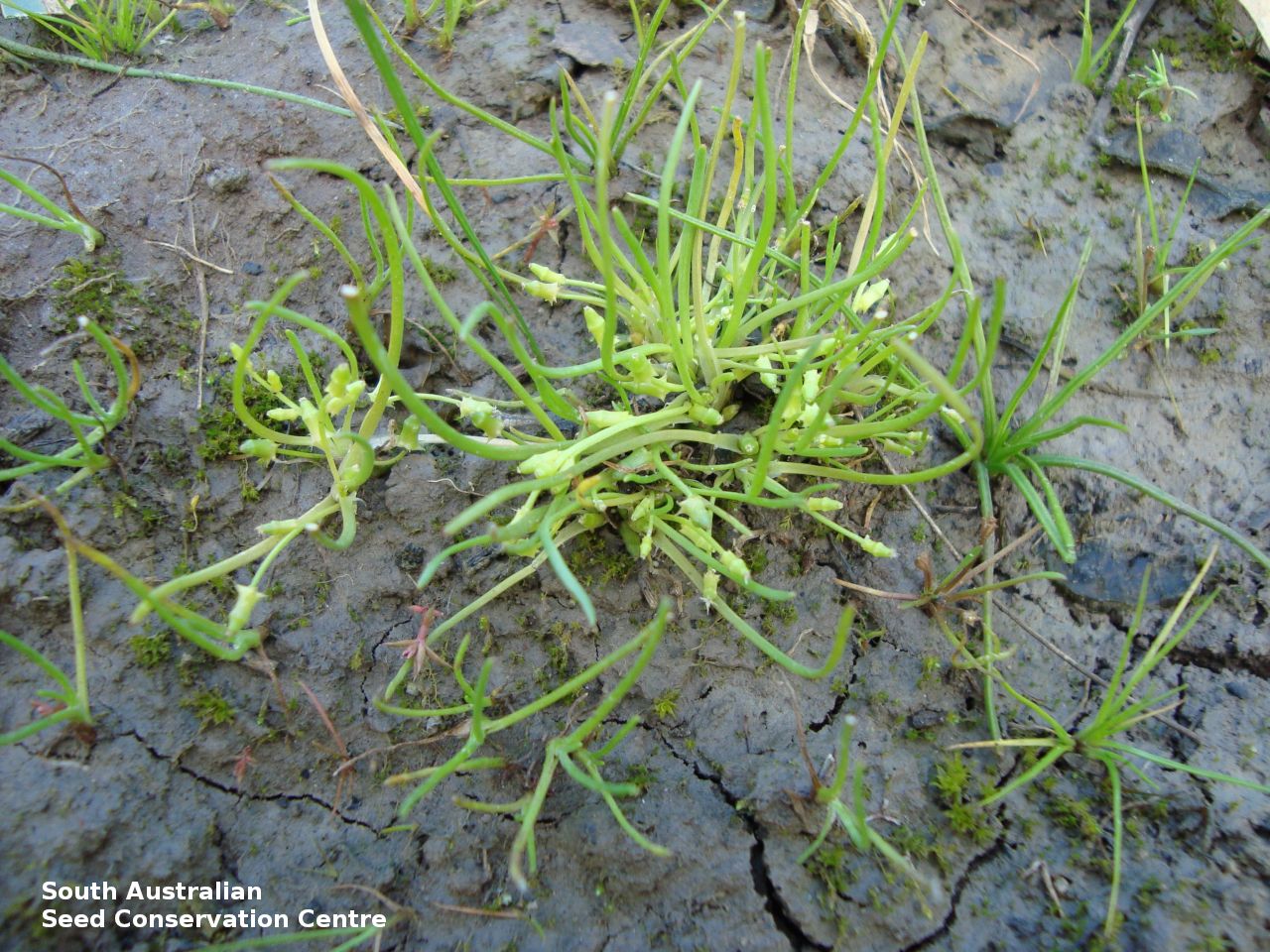
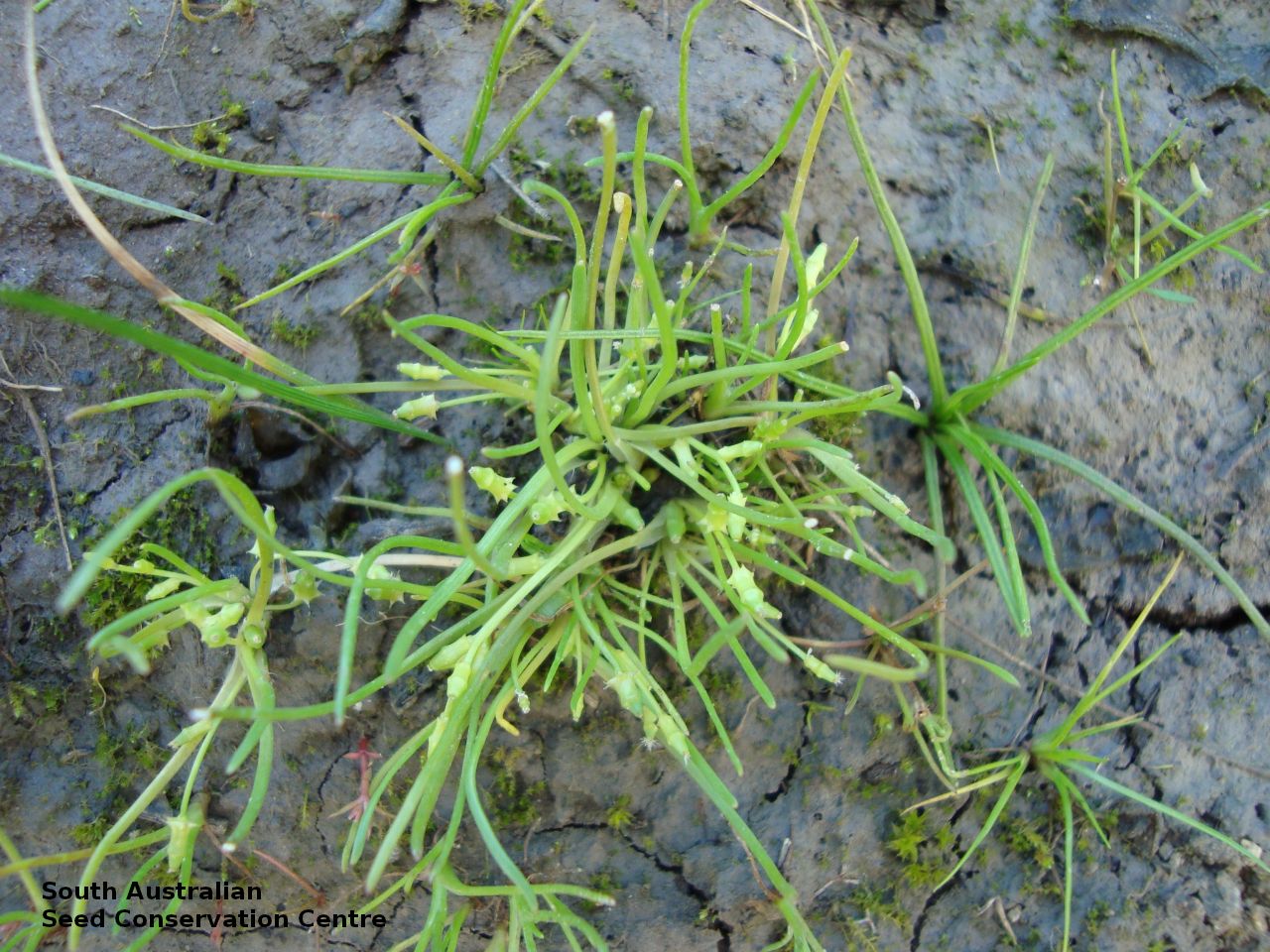
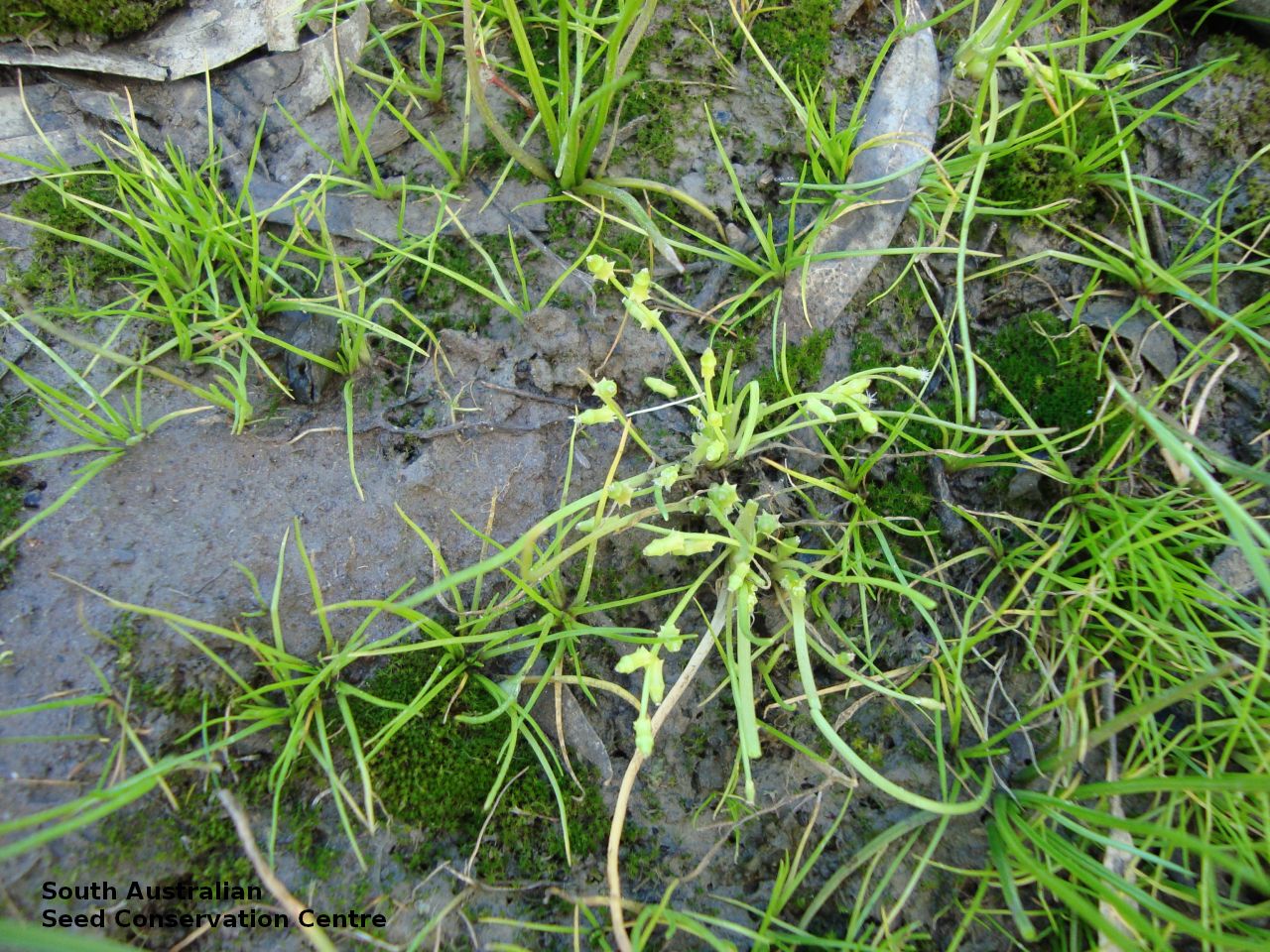
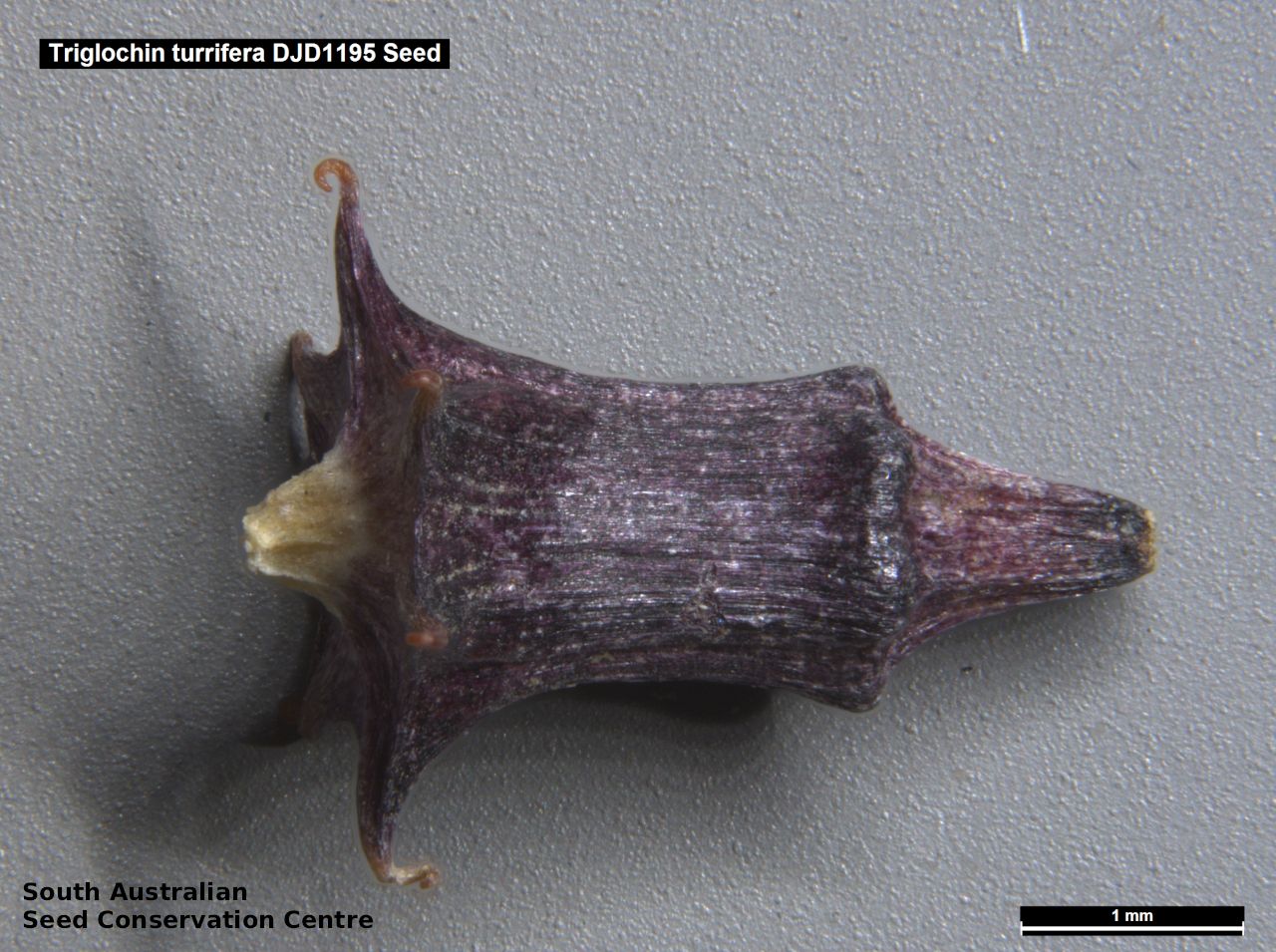
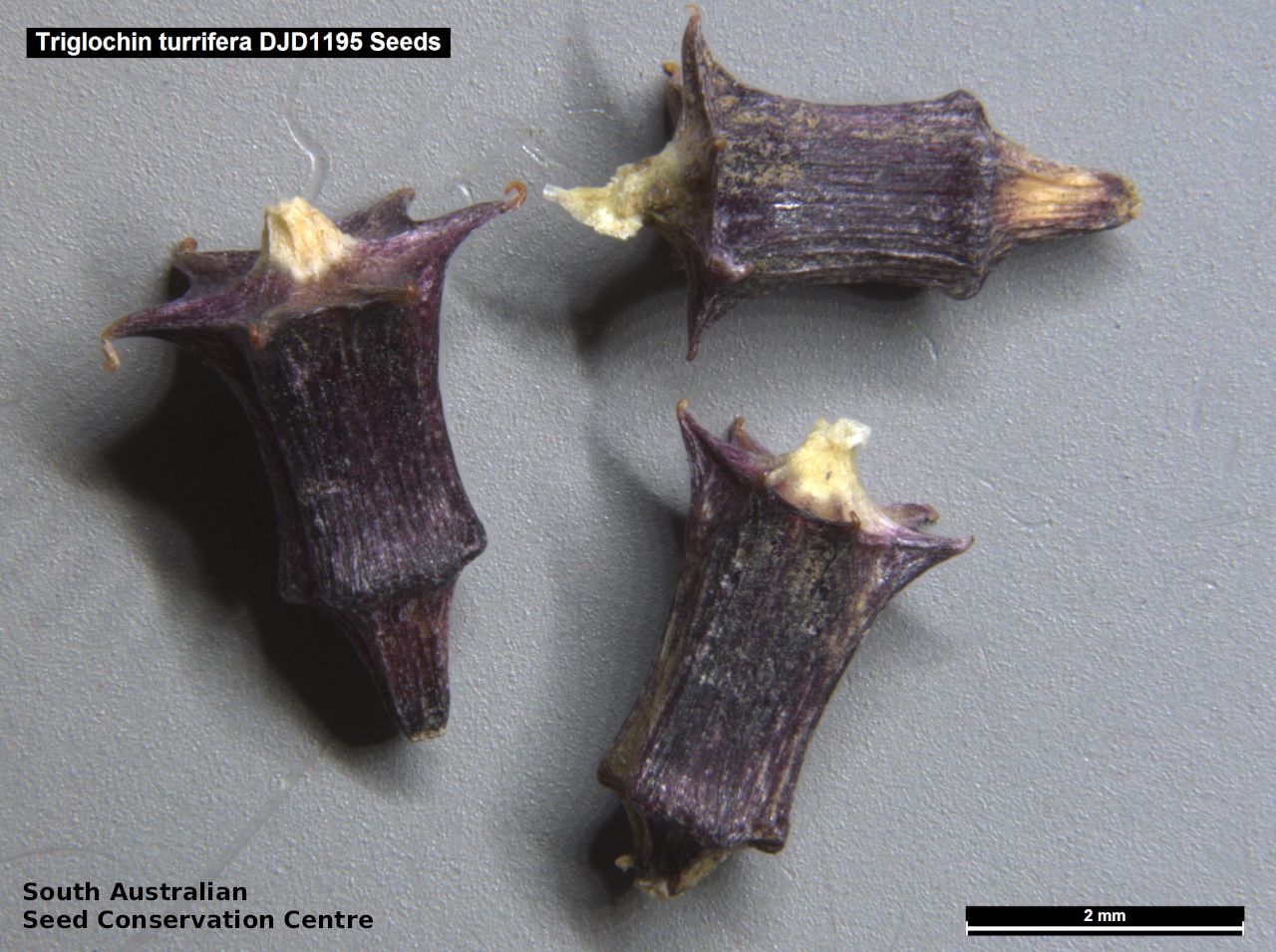
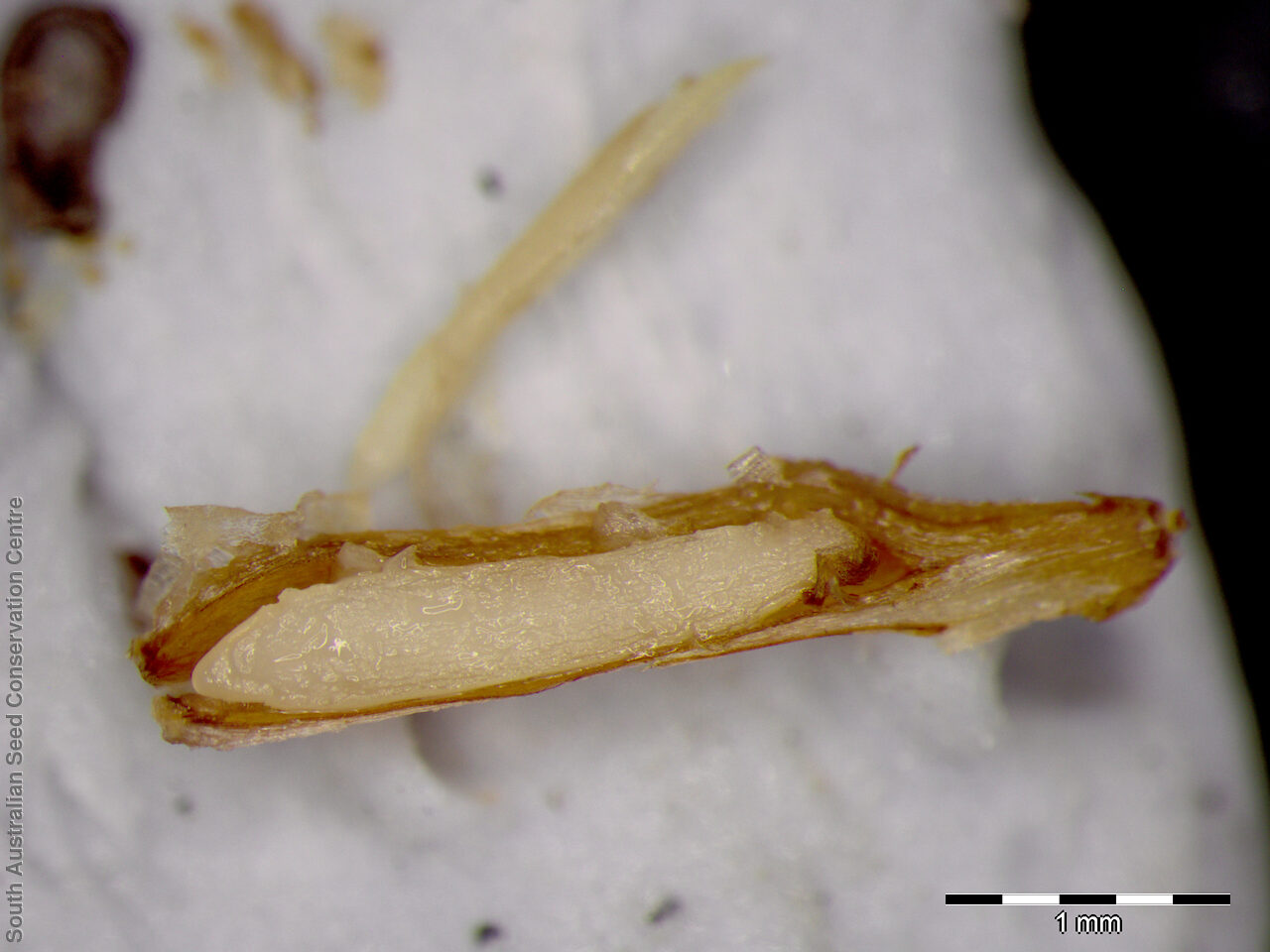
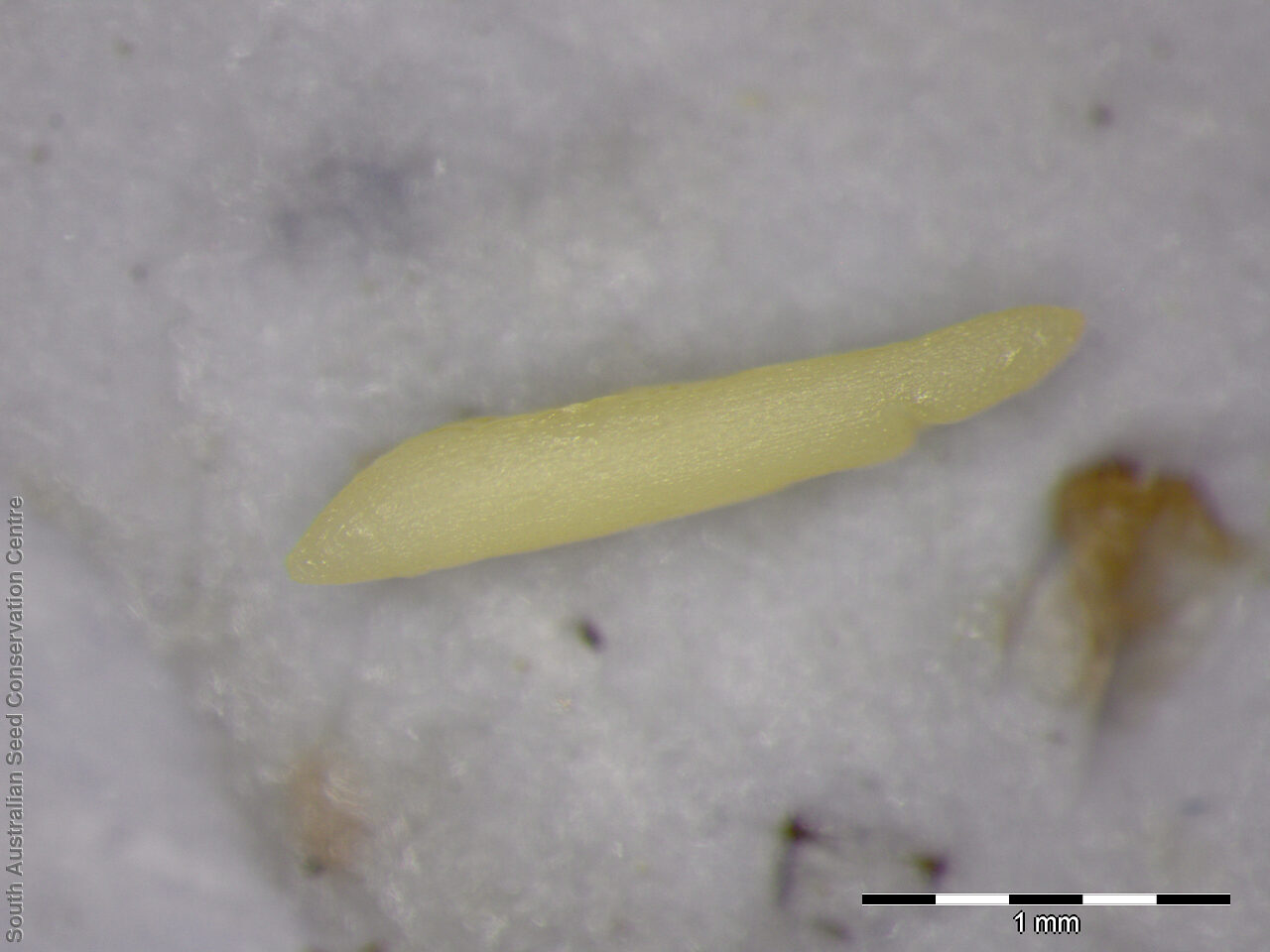


Botanical art
Prior names
Triglochin turriferum, orth.var.
Triglochin turriferum, orth.var.
Common names
Rocket-fruit Arrowgrass
Turret Arrowgrass
Tiny Arrowgrass
Etymology
Triglochin from the Greek 'treis' meaning three and 'glochis' meaning a point; referring to its three-sided carpels. Turrifera from the Latin 'turris' meaning tower and the suffix '-fera' meaning bearing; referring to its tower or rocket-shaped fruit.
Distribution and status
Found in the upper South-east in South Australia, growing on wet soils in small temporary streams, roadside pools, gilgais and depression on granite outcrops. Also found in New South Wales and Victoria. Native. Very rare in South Australia. Uncommon in New South Wales. Common in Victoria.
Herbarium region: South Eastern
NRM region: South East
AVH map: SA distribution map (external link)
Plant description
Small annual herb to 14 cm high. Leaves flat and thread-like, to 14 cm long, usually longer than the inflorescence. Inflorescence an erect, ascending or spreading spike to 4.5 cm long, fruiting part at the top to 4 cm long, with 5�14 fruits. Flowering between July and September. Fruits are straw-coloured 6-sided rocket-shaped fruit to 5 mm long and 2 mm wide, stalkless or on very short stalk with 3 seed segments, all fertile and completely united and with 2 lateral thickened spurs to 1 mm long at the base. Seeds are same as for the fruit. Seed embryo type is linear.
Seed collection and propagation
Collect seeds between September and November. Collect mature fruits either by breaking off individual spikes or by removing plants that are drying off with fruits that are straw-colour and seed segments coming apart easily. Place the fruit spikes in a tray and leave to dry for 1 to 2 weeks. Then use you fingers to remove the dried fruit from the spikes. Use a sieve to separate any unwanted material. Store the seeds with a desiccant such as dried silica beads or dry rice, in an air tight container in a cool and dry place. From one collection, the seed viability was high, at 100%.
| Location | No. of seeds (weight grams) | Number of plants | Date collected | Collection number Collection location | Date stored | % Viability | Storage temperature |
|---|---|---|---|---|---|---|---|
| MSB | 2,600 (2.36 g) | 100+ | 22-Oct-2008 | DJD1195 South Eastern | 55% | ||
| BGA | 1,050 (2 g) | 50+ | 21-Oct-2008 | DJD1353 South Eastern | 20-Jul-2009 | 100% | -18°C |
Number of plants: This is the number of plants from which the seeds were collected.
Collection location: The Herbarium of South Australia's region name.
% Viability: Percentage of filled healthy seeds determined by a cut test or x-ray.